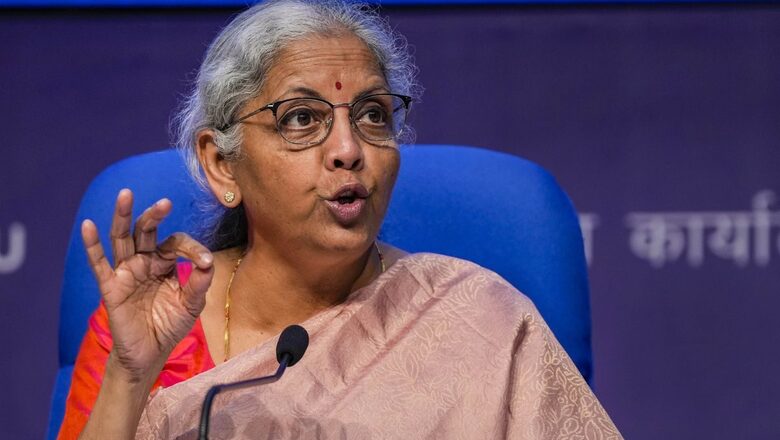
views
To bring down the debt burden, the government has taken various measures like increasing the tax revenue buoyancy, enhancing the public expenditure effectiveness, commitment to reducing fiscal deficit and augmenting the productive efficiency, Finance Minister Nirmala Sitharaman said on Monday.
In addition to strengthening the financial system, the government has more than doubled its effective capital expenditure from Rs 6.57 lakh crore in 2020-21 to Rs 13.71 lakh crore and Rs 14.97 lakh crore in 2023-24 (BE) and 2024-25 (BE), respectively, to crowd in private investments, she said in the Lok Sabha.
The government’s emphasis on increasing capital expenditure will not only boost the investments, but also return a higher GDP growth to lower the debt burden, she said.
Simultaneously, she said, the state governments have been incentivised to increase their capital spending through measures like 50-year interest-free capex loans and front-loading of tax devolution instalments.
Various other measures like reduction of the corporate tax rate, liberalisation of foreign direct investment, and enhancement of ease of doing business have created supportive conditions for sustained growth in private investment, she said.
As a result, the overall investment rate in the economy consolidated at 29.2 per cent of GDP in 2022-23 and further improved to 29.8 per cent in 2023-24 as per the advance estimates by NSO, she said.
Impacted by COVID-19, the debt to GDP ratio increased to 89.6 per cent at the end of the pandemic year 2020-21.
After a sharp rise in government debt in 2020-21 on account of the revenue shortfall and additional spending requirements due to the pandemic, the general government debt relative to GDP has gradually declined over the last two years to reach around 81 per cent at the end of March 2023 (provisional), she said.
Buoyant revenue collection, rebalancing of spending from revenue to capital expenditure and robust real GDP growth in the post-pandemic years have led to a decline in the government debt relative to GDP, she added.
Replying to another question, Sitharaman said more than 46.15 crore loans amounting to Rs 27.38 lakh crore have been sanctioned to the borrowers under the Pradhan Mantri Mudra Yojana (PMYY) as of January 26, 2024.
Complaints with regard to the implementation of PMMY are redressed in consultation with respective banks. The complaints received at the Centralised Public Grievance Redress and Monitoring System (CPGRAMS) are also being taken up with respective banks for redressal within the prescribed timelines, she said.
Pradhan Mantri Jan Dhan Yojana (PMJDY) has been successful in increasing banking penetration to promote financial inclusion across the country, she said in a separate reply.
A total of 51.61 crore Jan-Dhan accounts with a deposit balance of Rs 2,17,218 crore have been opened as of January 17, 2024, under PMJDY, the minister said.
Of the total, 28.60 crore (55.5 per cent) Jan-Dhan accounts belong to women, and about 34.41 crore (66.8 per cent) PMJDY accounts have been opened in rural and semi-urban areas.




















Comments
0 comment